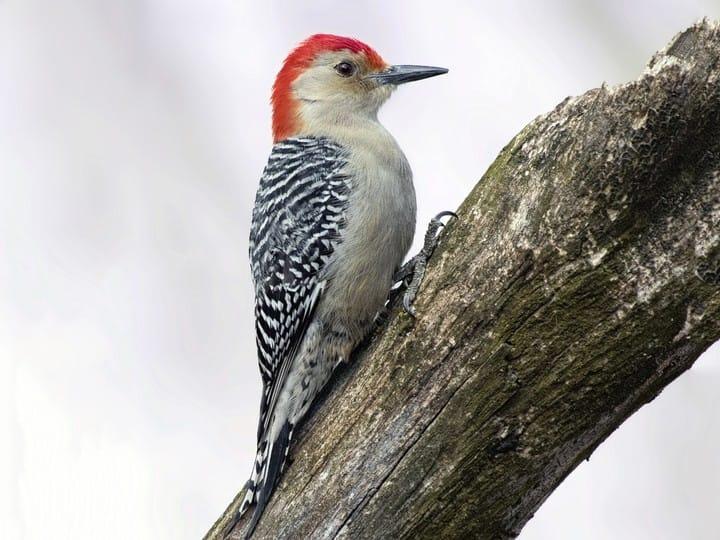Woodpeckers Unleashed: Exploring the Marvels of These Proficient Tree Mountain Climbers
Woodpeckers, with their distinctive markings and balanced drumming resembling through wooded locations, hold a distinct area in the bird globe. Their specialized anatomy and adaptations allow them to navigate vertical surface areas with unequaled ability. Their mastery of tree climbing is just one facet of their remarkable behavior. As we delve into the intricate details of woodpeckers' nesting behaviors, feeding strategies, and the ongoing conservation efforts to shield these exceptional birds, a deeper admiration for their place in nature unfolds.
Makeup and Adaptations
When analyzing the anatomy and adjustments of woodpeckers, one can observe impressive features that enable these birds to prosper in their specialized ecological specific niche. Woodpeckers are equipped with a suite of special physiological attributes that aid them in their woodpecking behavior. Among one of the most famous functions is their solid, chisel-like beak, which is specialized for boring right into timber to discover pests or produce nesting tooth cavities. This beak is supported by strong neck muscle mass and an extremely developed head structure that works as a shock absorber, allowing woodpeckers to continuously peck at trees without causing mind injury. In addition, woodpeckers have zygodactyl feet, with two toes dealing with forward and two dealing with backward, giving a company grasp on tree trunks while they search for food or drum for communication.
In addition, woodpeckers have an unique tongue framework that is long, barbed, and sticky, allowing them to remove insects from holes in wood. This customized adjustment allows woodpeckers to make use of a food source that is unattainable to several various other bird types. On the whole, the composition and adaptations of woodpeckers showcase the impressive transformative services that have actually permitted these birds to grow in their arboreal habitat.
Drumming Actions
Having actually discovered the makeup and adaptations of woodpeckers, the focus currently moves to understanding their drumming habits, a distinctive element of their communication and territorial displays. Drumming is a crucial type of communication amongst woodpeckers, serving multiple objectives such as developing territories, bring in mates, and signaling alarm. Each woodpecker varieties has a special drumming pattern that helps individuals identify participants of their own species and differentiate them from competitors or predators.
Woodpeckers create drumming audios by quickly pecking on powerful surfaces such as dead trees, energy poles, or even metal things, creating a series of balanced beats. The strength and speed of drumming can differ based upon the objective; as an example, a fast drumming sequence might symbolize aggressiveness towards intruders, while a slower and softer drumming pattern might show courtship (Woodpeckers in Florida). In addition, woodpeckers may adjust the regularity and period of their drumming to communicate specific messages effectively
Nesting Behaviors
Discovering the nesting practices of woodpeckers exposes fascinating understandings into their reproductive habits and environment choices. Woodpeckers are recognized for their unique nesting preferences, commonly excavating dental caries in trees to produce sheltered areas for raising their young. These cavities serve not just as a nesting website but also as a safe and secure refuge from predators and severe weather.
Woodpeckers show a high level of fidelity to their see nesting websites, often going back to the same location year after year. This actions highlights the relevance of ideal environment schedule for their reproductive success. The choice of a nesting site is critical for woodpeckers, with factors browse around here such as tree varieties, elevation, and decay stage playing substantial functions in their decision-making process.
Interestingly, some woodpecker varieties are understood to excavate multiple tooth cavities within their region, providing themselves with different nesting options. This approach might function as a type of insurance versus possible threats or disturbances to their main nesting website.

Feeding Methods
One of the most distinctive feeding habits of woodpeckers is drumming, which involves fast pecking on trees to reveal insects beneath the bark. Woodpeckers are additionally understood to dig deep into cavities in trees to accessibility hidden insect larvae or sap. Some varieties, like the acorn woodpecker, store nuts in particularly developed openings called granaries.
Conservation Initiatives
Among the intricate feeding methods showed by woodpeckers, the conservation initiatives focused on protecting these interesting birds play a crucial function in preserving their habitats and populations. Woodpeckers encounter numerous hazards to their survival, including habitat loss due to logging, climate adjustment modifying their ecosystems, and crashes with synthetic structures such as structures and automobiles - Woodpeckers in Florida. Preservationists are actively working to deal with these difficulties and guarantee the long-lasting health of woodpecker types

Education and public awareness projects are also crucial parts of woodpecker preservation efforts. By elevating awareness review regarding the significance of these birds in keeping healthy and balanced forest ecosystems, preservationists can amass assistance for habitat preservation campaigns and advertise liable land management practices. Through joint initiatives between researchers, policymakers, and regional neighborhoods, we can interact to safeguard a future where woodpeckers grow in their all-natural habitats.
Verdict
